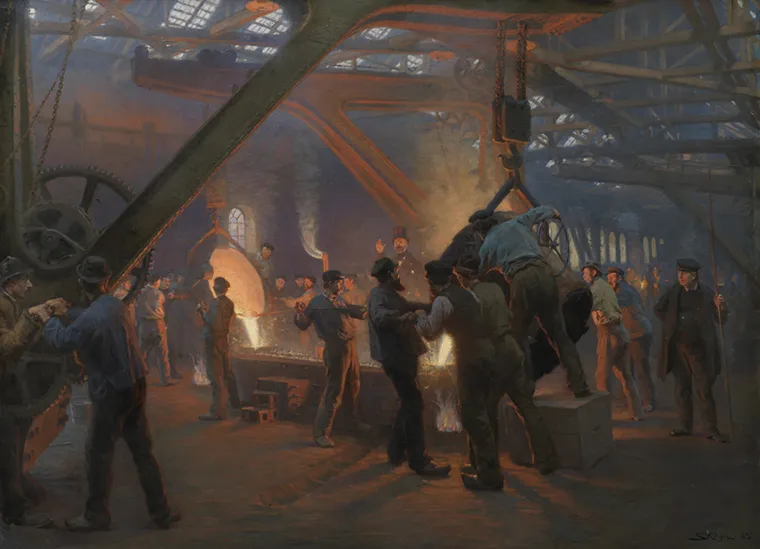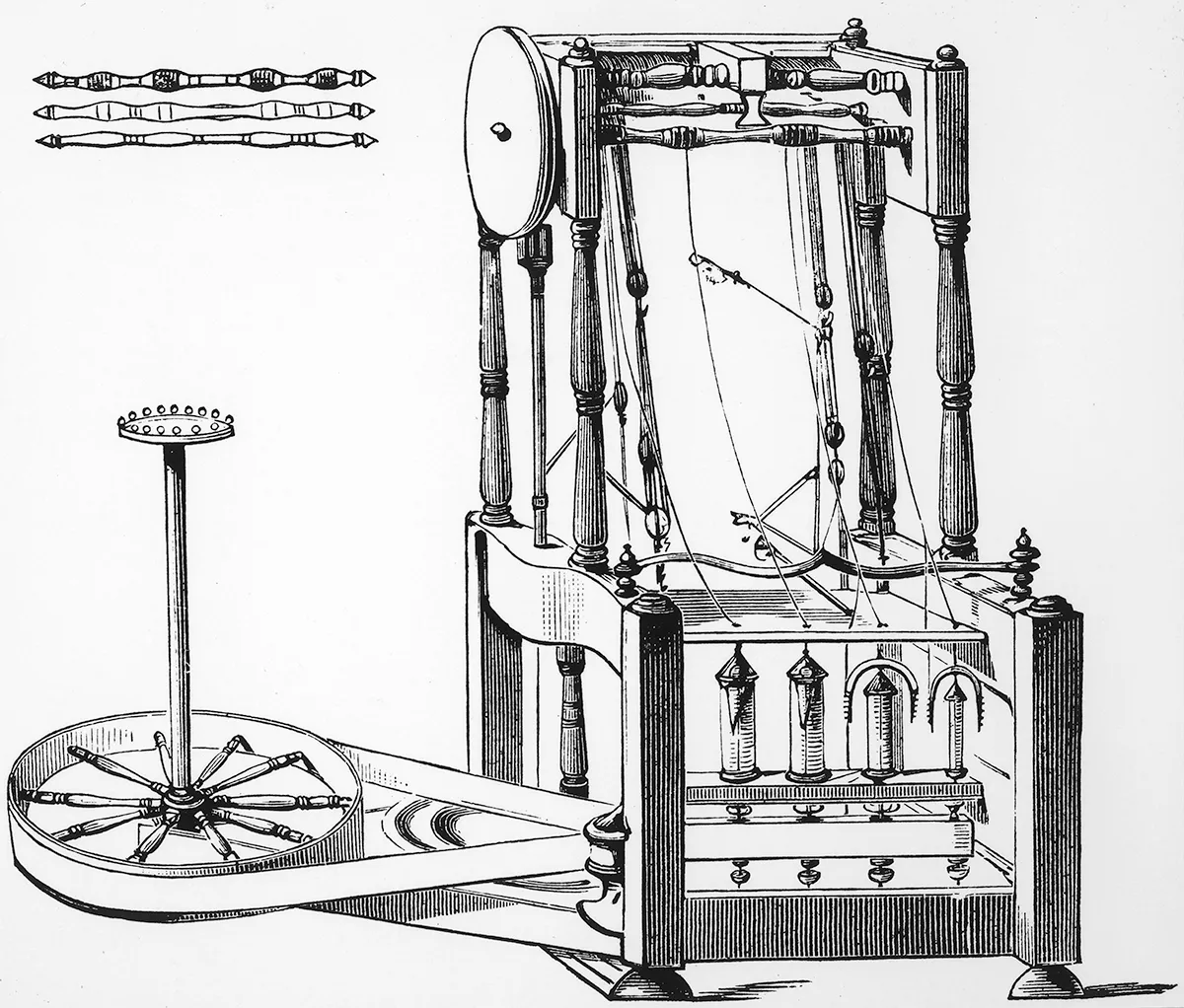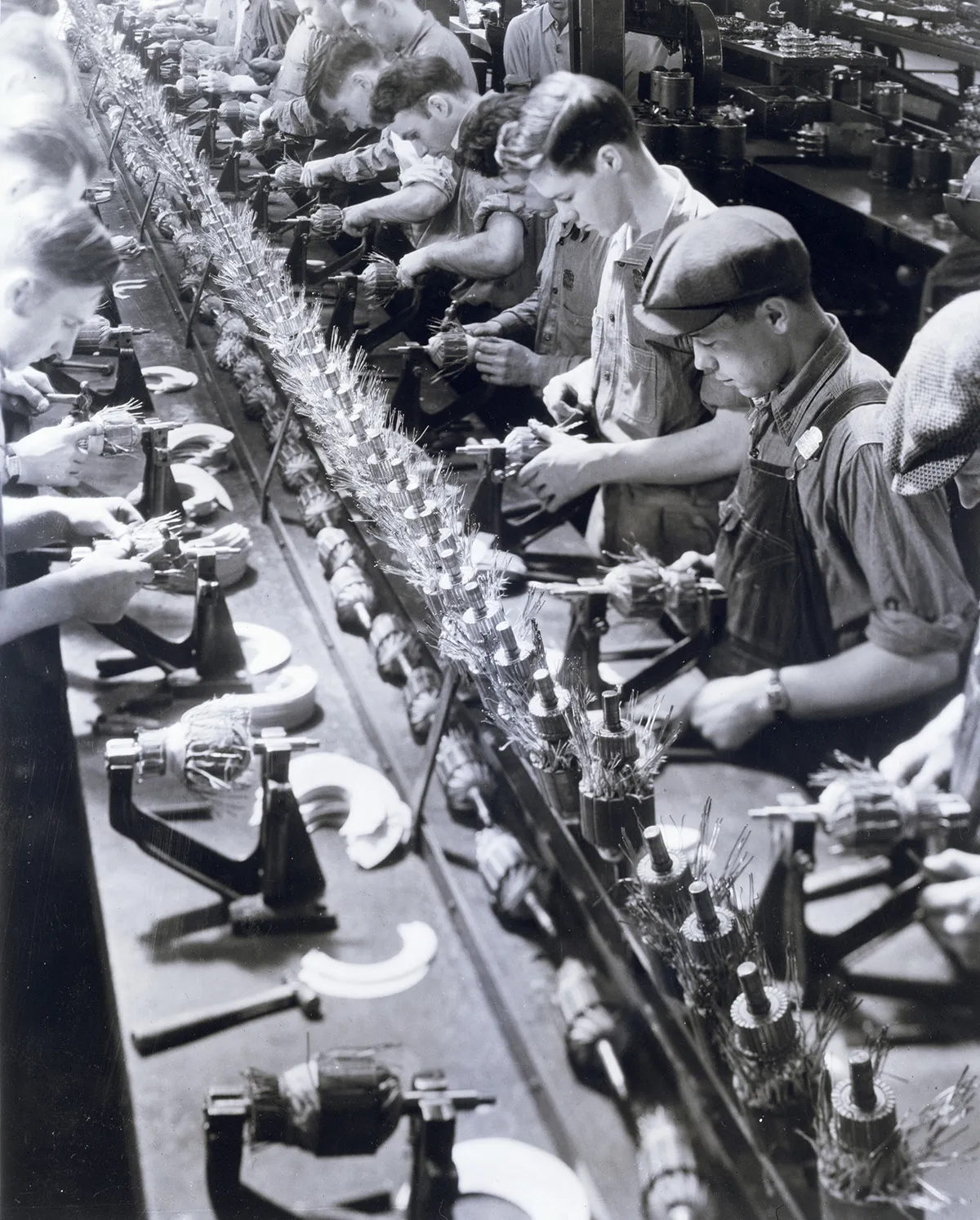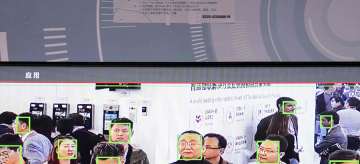What Are the Origins of Modern Production?
Learn about the Industrial Revolution and how technological innovations from the eighteenth and nineteenth centuries continue to shape society today.
Imagine a day in the life of an average American worker. They probably live in a city and start their mornings by driving to work. In the office, they check in with their manager, who assigns them tasks for the day, and around noon they take a lunch break with their coworkers. At the end of the day, they report how many hours they’ve worked, and every other week they receive a paycheck.
Seems normal, right?
Most of our ancestors wouldn’t agree. In fact, many aspects of our lives—including the goods we produce, the cities we live in, and the environment we inhabit—can be traced back to a period of groundbreaking innovation called the Industrial Revolution.
This resource explores how the Industrial Revolution transformed society between roughly 1750 and 1860 and how it continues to shape the world today.
What did manufacturing look like before the Industrial Revolution?
Before factories existed, highly skilled workers known as artisans made everything, including books, clothing, and furniture in small workshops across medieval Europe. The pace of production was slow, with each product individually handcrafted. In turn, goods were often expensive and in short supply.
Not just anyone could manufacture and sell such goods either. Around the eleventh century, associations of artisans called guilds came to power. Guilds lobbied and bribed politicians in order to become the exclusive manufacturers of certain products. This arrangement meant that selling a nail, for instance, without belonging to the official nail guild could land someone in prison.
And how exactly did one join a guild? Well, that, too, was no small feat. Prospective members worked in a system in which they supplied guild artisans with cheap labor in exchange for training. They then had to pay a membership fee that could cost around nine years in wages. Many guilds refused to admit women, migrants, farmers, propertyless men, formerly enslaved people, and practitioners of minority religions. As a result, guild membership belonged to privileged members of society and often passed from father to son.
Guilds not only decided who could make their products but also what those products could look like, enforcing strict guidelines on price and design. Although this system was intended to ensure that guild members did not have to compete against each other, it also had the effect of largely stifling innovation.
What brought about the Industrial Revolution?
Guilds ruled the marketplace for a long time—but not forever.
By the late seventeenth century, the British government had repealed many of the guilds’ exclusive selling rights, without which artisans struggled to compete with upstart entrepreneurs who created more diverse goods at cheaper prices.
As guilds declined, this new class of manufacturers became increasingly wealthy, aided by various political and economic changes unfolding in England. New patent laws encouraged people to invest in innovation by ensuring they could protect and profit from their inventions. Reforms in banking made it easier to borrow money, helping businesses grow even larger. And the expansion of the British Empire meant businesses had millions of new potential customers.
Two further developments—innovations in manufacturing and the rise of the factory system—cemented the downfall of the guilds, marking the beginning of the Industrial Revolution in mid-eighteenth-century England.
The invention of new machines allowed entrepreneurs to automate parts of the manufacturing process, leading to goods that could be produced faster and cheaper than ever before. One such entrepreneur, Richard Arkwright, patented the water frame in 1769, which harnessed waterpower in the textile weaving process rather than relying on hand-spinning. When Arkwright lost his water frame patent in court in 1785, a flood of entrepreneurs replicated his water-powered cotton mill. In subsequent decades, manufacturers in other industries would seek to similarly improve efficiency through the creation of new tools. A flurry of new inventions entered the market, including the cotton gin, the internal combustion engine, and the electric generator.
Notable Inventions of the Industrial Revolution
- Water Frame: During the late eighteenth century, as textile manufacturing boomed, inventors engineered multiple improvements on the spinning wheel. One such innovation, the water frame, used running water to both accelerate the pace of textile production and produce cotton yarn that was finer and more durable for weaving. Sir Richard Arkwright patented the machine in 1769, transforming the English textile industry.
- Watt Steam Engine: Thomas Newcomen invented the first steam engine in 1711. Five decades later, James Watt improved upon Newcomen’s creation, devising a new, highly efficient engine that became a cornerstone of industrialization. Steam-powered machinery dominated manufacturing, agriculture, and transportation industries, increasing productivity and growth.
- Internal Combustion Engine: The first alternative to the steam engine emerged in Europe in the mid-nineteenth century when engineers Alphonse Beau de Rochas and Nikolaus Otto separately built and patented internal combustion engines. The machines created power through pistons, which sparked the compressed fuel stored in a cylinder. Engineers still use this design today to power cars and motorcycles.
- Electric Generator: In 1830, English physicist Michael Faraday invented the first electric generator. His machine used magnets to create electric currents. In following years, various inventors including Samuel Morse used Faraday’s generator to create another landmark apparatus—the telegraph, one of the earliest text-messaging devices.
- Moving Assembly Line: In 1913, Henry Ford pioneered the moving assembly in his car factories, using conveyor belts to transport component parts across different assembly stations. The innovation greatly increased the pace of manufacturing, and factory owners in other industries quickly adopted the technology. The moving assembly line made products cheaper for consumers but also changed working conditions by increasing the demand for cheap, unskilled labor.
Around the same time, factories became increasingly common. Unlike guild-style workshops in which a single artisan would produce a good—say, a shoe—from start to finish, factories employed a system called division of labor. This system increased efficiency by dividing manufacturing into a series of tasks with each worker responsible for a single task. Rather than have one worker produce an entire shoe, each worker could spend their entire day fastening heels or threading shoelaces for hundreds of shoes. And because the majority of tasks were menial, factories could hire cheap, unskilled, and easily replaced laborers instead of artisans. In the early 1900s, Henry Ford further accelerated the pace of production by implementing the moving assembly line, which reduced the time it took to produce a single car from twelve hours to just over ninety minutes.
Between the surge in technological innovation and the rise of a new system of production, the Industrial Revolution led to manufacturing becoming highly efficient and, therefore, highly profitable.
How did the Industrial Revolution reshape society?
Prior to the Industrial Revolution, farming was a common profession. It was also precarious work. Any number of unpredictable factors, like a single drought or one bad harvest, could spell financial ruin and the inability to put food on the table. But as the Industrial Revolution produced new jobs—first in England and, eventually, around the world—people started leaving their farms for factories. With that transition came more reliable and consistent incomes. And with innovations in mass production, food and household items became cheaper and more readily available as well.
On the national level, in the mid-nineteenth century, the British economy was consistently growing for the first time in its history, buoyed by the country’s thriving textile, coal, and iron industries and their ability to produce goods at unprecedented rates.
The Industrial Revolution created so much growth that countries were willing to spy and steal to get their hands on the latest technology. The British government—determined to protect its economic advantage—even passed laws prohibiting the emigration of skilled workers and the export of industrial technology. Those laws, however, had little success. In one instance, a British industrialist named Samuel Slater emigrated to the United States in 1789 disguised as a farmer. He would go on to build the country’s first textile factory entirely from memory, having left Britain without notes or plans that could have been confiscated by British authorities. In the United States, Slater is known as the Father of the American Industrial Revolution; in England, he’s known as Slater the Traitor.
The Industrial Revolution would reorder not only the ways in which we produce goods but also the ways in which we work and live. Many of those changes are still felt today. Let’s explore five ways in which the Industrial Revolution reshaped society for centuries to come.
Changing workforce: The origins of today’s manufacturing workforce date back to the Industrial Revolution with the transition from artisan-led workshops to large factories employing cheap, unskilled workers.
This transition, however, often faced resistance. As factories grew and workshops shuttered, highly skilled—and now unemployed—artisans turned to factories for work. For many, this was the first time they were not self-employed. They had managers dictating their schedules and assigning them monotonous, menial tasks far below their skill level. Some artisans rebelled against their employers, ignoring orders and moving from factory to factory without notification. Others outright revolted, breaking machines and attacking factories in protest. In response, factory owners—including Richard Arkwright—armed their buildings with guns and cannons.
Factory owners struggled to find new ways to manage their workers. For the first time, many workplaces began establishing designated management positions and strict working hours. In several instances, factory owners even tried to ensure that future generations of workers would be more disciplined and obedient, sponsoring churches, chapels, and the first Sunday schools. Many schools went through parallel changes and started implementing their own reforms, moving from small, informal schoolhouses to a “cells and bells” system with set schedules and larger class sizes.
Labor rights: Some of the first labor unions advocating for workers’ rights emerged during the Industrial Revolution in response to oppressive factory conditions and low wages.
Factories at the time largely lacked safety regulations, leading many workers to suffer injuries on the job. In addition, work shifts stretched as long as eighteen hours, and many factories employed children, some as young as five years old. Although the Industrial Revolution produced tremendous economic growth, many of those gains were concentrated in the hands of factory owners rather than the average worker.
Such conditions motivated calls for change and even inspired the German philosopher Karl Marx to write The Communist Manifesto. Those conditions also led to a rise in union membership. Unions, however, frequently faced pushback from factory owners and governments that feared that labor reforms could threaten productivity and profits. In many instances, conflicts between workers and management devolved into violence. The Pennsylvania state militia broke up a battle in 1892 between protesting union workers and a private security agency hired by the Carnegie Steel Company after fighting between the two sides left eight people dead.
Urbanization: For much of human history, the size of cities paled in comparison to today’s booming metropolises. At the start of the Industrial Revolution in 1750, England had just two cities with a population greater than fifty thousand. By 1851, that number had risen to twenty-nine. So what accounted for this massive wave of urbanization?
Early in the Industrial Revolution, factories—like Arkwright’s cotton mill—had to be built next to rivers in order to harness their energy. But in the early nineteenth century, an invention known as the Watt steam engine became increasingly popular. This device created energy by burning coal, which allowed entrepreneurs to move their factories away from water sources and into major cities full of people who would buy their products and work in their mills.
As urban factories opened, people migrated from rural areas into cities in search of work. However, cities were often unprepared to accommodate the influx. The lack of sufficient housing, clean water, and sanitation contributed to the spread of diseases such as cholera and typhus.
Climate change: Manufacturers set the world on a dangerous climate trajectory when they started using coal to power their factories. The burning of coal releases greenhouse gases—such as carbon dioxide—which warm the planet by trapping the sun’s heat in the atmosphere.
Today, the world is nearly 1.8˚F (1˚C) warmer than it was before the Industrial Revolution. While 1.8˚F could seem hardly noticeable on a sunny day, countries are already seeing the severe effects of planetwide warming at this level. Heat waves are lasting longer, crop yields are shrinking, and rising sea levels are threatening coastal areas.
Scientists warn that without a significant reduction in greenhouse gas emissions, global temperatures could reach 2˚C (3.6˚F) above pre-Industrial Revolution temperatures by 2050. Should this happen, the results would be catastrophic and potentially irreversible.
Colonialism: The Industrial Revolution fueled a new wave of colonialism, the economic effects of which can still be felt hundreds of years later.
As European manufacturing expanded, suppliers needed more customers and new sources of raw materials, such as coal and cotton. These interests, in part, motivated European empires to seize resource-rich lands abroad. Throughout the nineteenth century, England expanded its control over India, France colonized Algeria and large parts of Southeast Asia, and Germany took over territories in Africa—to name just a few examples.
Industrialized countries frequently forced their colonies to produce raw materials, which would be shipped to European homelands, turned into finished products, and sold back to the colonies at marked-up prices. Under British rule, India’s textile industry collapsed. The country went from making finished goods like fabric to instead exporting raw cotton to England and importing the same goods it once produced domestically. This process—known as deindustrialization—is believed to have severely stunted India’s economic development.
What can the Industrial Revolution teach us about innovation?
The legacy of innovation is complicated. The Industrial Revolution produced unprecedented economic growth, led to greater food security, and provided millions of people with access to previously unaffordable goods. At the same time, it contributed to deteriorating working conditions at home, economic exploitation abroad, and a climate crisis around the world.
Scholars today claim we’re in the midst of yet another Industrial Revolution. Artificial intelligence and new forms of automation are reshaping both low-skilled jobs like trucking and manufacturing and high-skilled professions like law and medicine.
It’s difficult to know whom this new Industrial Revolution will benefit and how it will reshape society. Some experts fear that innovation will lead to widescale unemployment, with potentially half of today’s positions automated by 2055. Others believe that job creation in entirely new industries will balance out job losses, as was the case during the first Industrial Revolution.
But one thing is certain: the legacy of innovation is lasting. Manufacturing changes from more than two hundred years ago have directly shaped today’s workdays, cities, climate, and global economy. How will a new age of industrialization reshape the ways we work and live in the future?





